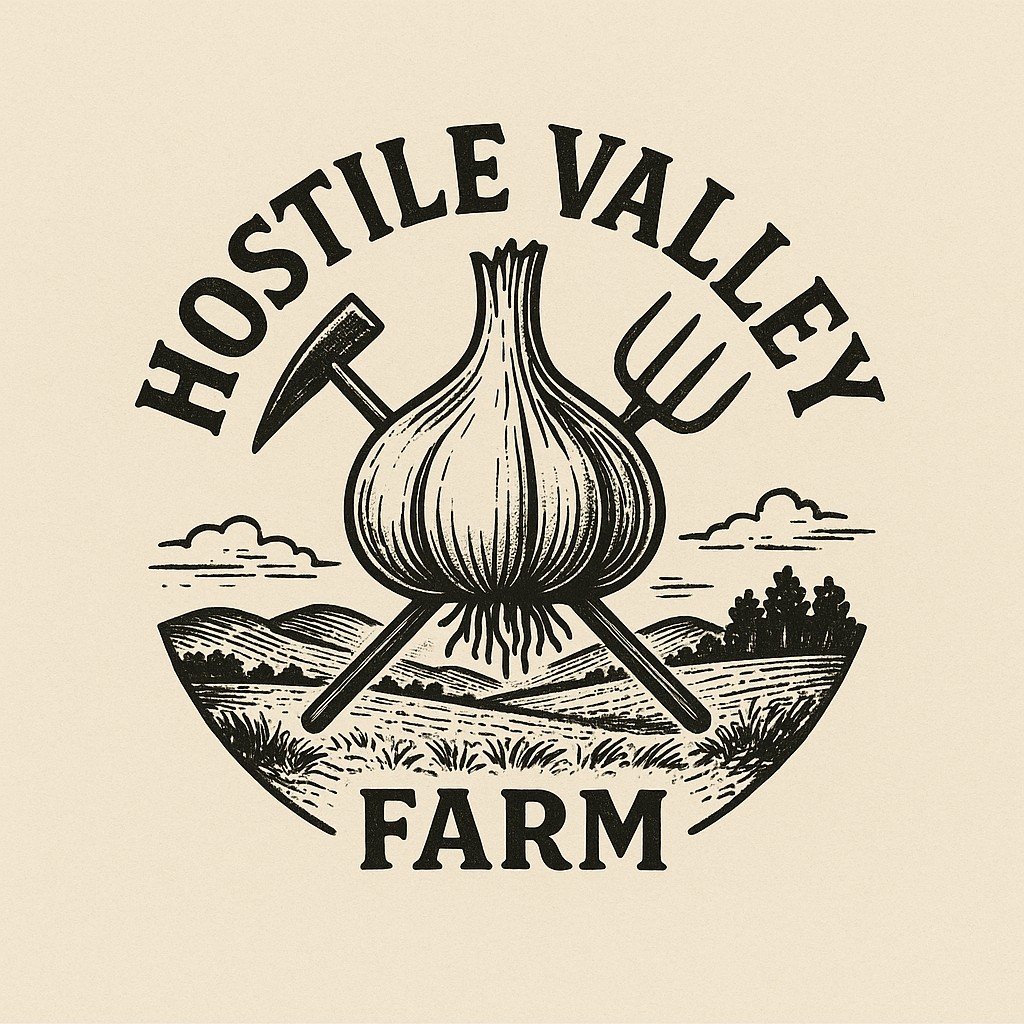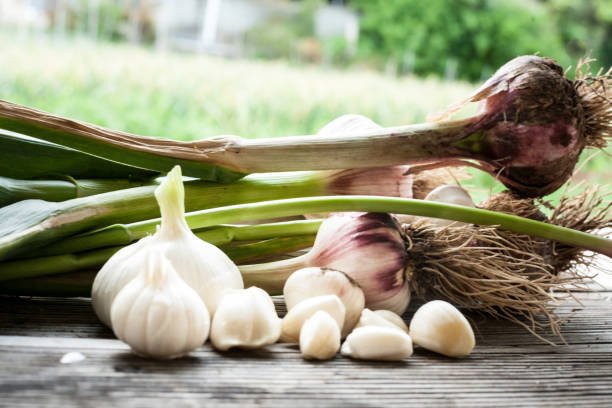What Are Garlic Scapes?
Garlic scapes are the long, slender flower stems that grow from the top of hardneck garlic (the type of garlic that typically grows in colder climates, specifically the Northeastern U.S. and Canada). Up until recently, these stems were simply considered by-products of garlic farming.
However, garlic scapes have begun to make a debut at farmers' markets around the country, usually in late spring. This is because farmers need to harvest the garlic scapes early, so that the plant can direct its energy towards growing the bulb, which will then be harvested in late summer. If you see something that looks like a super-long, curly green bean with a tapering tip, you're probably looking at garlic scapes.
While garlic scapes do have a garlicky flavor, it's much more muted than that of the bulbs. It often has a grassy flavor to it as well, similar to scallions. Once cooked, their texture is surprisingly dense and meaty.
Garlic Scapes vs. Ramps
Ramps, also called wild leeks or ramson, are often confused with garlic scapes because they're somewhat similar in appearance and they are both available in the spring. Both ramps and garlic scapes are part of the allium family, which includes onions, shallots, and garlic. However, ramps and garlic scapes are two different plants and not the same: Garlic scapes are specifically the tops of the garlic bulb, while ramps consist of a whole plant that tastes similar to a cross between leek, onion, and garlic.
How to Use Garlic Scapes
You can really use garlic scapes any way you would use green onions, chives, or garlic cloves. But before you get started cooking with garlic scapes, make sure to cut off the tips and the bulb, as these can get quite mealy once cooked. You'll also want to make sure to give them a good rinse to wash away any dirt or bugs.
When it comes to cooking with garlic scapes, the opportunities are truly endless. Because they are so sturdy, garlic scapes make a great substitute for green beans in stir-fries. You can also use them in omelets, frittatas, homemade pesto, vinaigrettes, on pizzas, or mixed in a compound butter for a touch of mild garlicky flavor. Some even prefer them sautéed with a little butter or grilled (as you would with green onions) for a simple, garlicky side.
How to Store Garlic Scapes
Like green onions, garlic scapes will last for several weeks in the crisper drawer of your fridge. Store them loosely in a plastic bag that's slightly open.
Benefits of Garlic Scapes
The USDA's food database does not currently include garlic scapes, but according to the Farmers' Almanac these tasty greens are a good source of protein, vitamin C, and calcium and, like garlic cloves, are said to help prevent heart disease, high blood pressure, and reduce inflammation. As if we needed an excuse to eat more garlic!
What Are Garlic Scapes?
Garlic scapes are the long, slender flower stems that grow from the top of hardneck garlic (the type of garlic that typically grows in colder climates, specifically the Northeastern U.S. and Canada). Up until recently, these stems were simply considered by-products of garlic farming.
However, garlic scapes have begun to make a debut at farmers' markets around the country, usually in late spring. This is because farmers need to harvest the garlic scapes early, so that the plant can direct its energy towards growing the bulb, which will then be harvested in late summer. If you see something that looks like a super-long, curly green bean with a tapering tip, you're probably looking at garlic scapes.
While garlic scapes do have a garlicky flavor, it's much more muted than that of the bulbs. It often has a grassy flavor to it as well, similar to scallions. Once cooked, their texture is surprisingly dense and meaty.
Garlic Scapes vs. Ramps
Ramps, also called wild leeks or ramson, are often confused with garlic scapes because they're somewhat similar in appearance and they are both available in the spring. Both ramps and garlic scapes are part of the allium family, which includes onions, shallots, and garlic. However, ramps and garlic scapes are two different plants and not the same: Garlic scapes are specifically the tops of the garlic bulb, while ramps consist of a whole plant that tastes similar to a cross between leek, onion, and garlic.
How to Use Garlic Scapes
You can really use garlic scapes any way you would use green onions, chives, or garlic cloves. But before you get started cooking with garlic scapes, make sure to cut off the tips and the bulb, as these can get quite mealy once cooked. You'll also want to make sure to give them a good rinse to wash away any dirt or bugs.
When it comes to cooking with garlic scapes, the opportunities are truly endless. Because they are so sturdy, garlic scapes make a great substitute for green beans in stir-fries. You can also use them in omelets, frittatas, homemade pesto, vinaigrettes, on pizzas, or mixed in a compound butter for a touch of mild garlicky flavor. Some even prefer them sautéed with a little butter or grilled (as you would with green onions) for a simple, garlicky side.
How to Store Garlic Scapes
Like green onions, garlic scapes will last for several weeks in the crisper drawer of your fridge. Store them loosely in a plastic bag that's slightly open.
Benefits of Garlic Scapes
The USDA's food database does not currently include garlic scapes, but according to the Farmers' Almanac these tasty greens are a good source of protein, vitamin C, and calcium and, like garlic cloves, are said to help prevent heart disease, high blood pressure, and reduce inflammation. As if we needed an excuse to eat more garlic!


